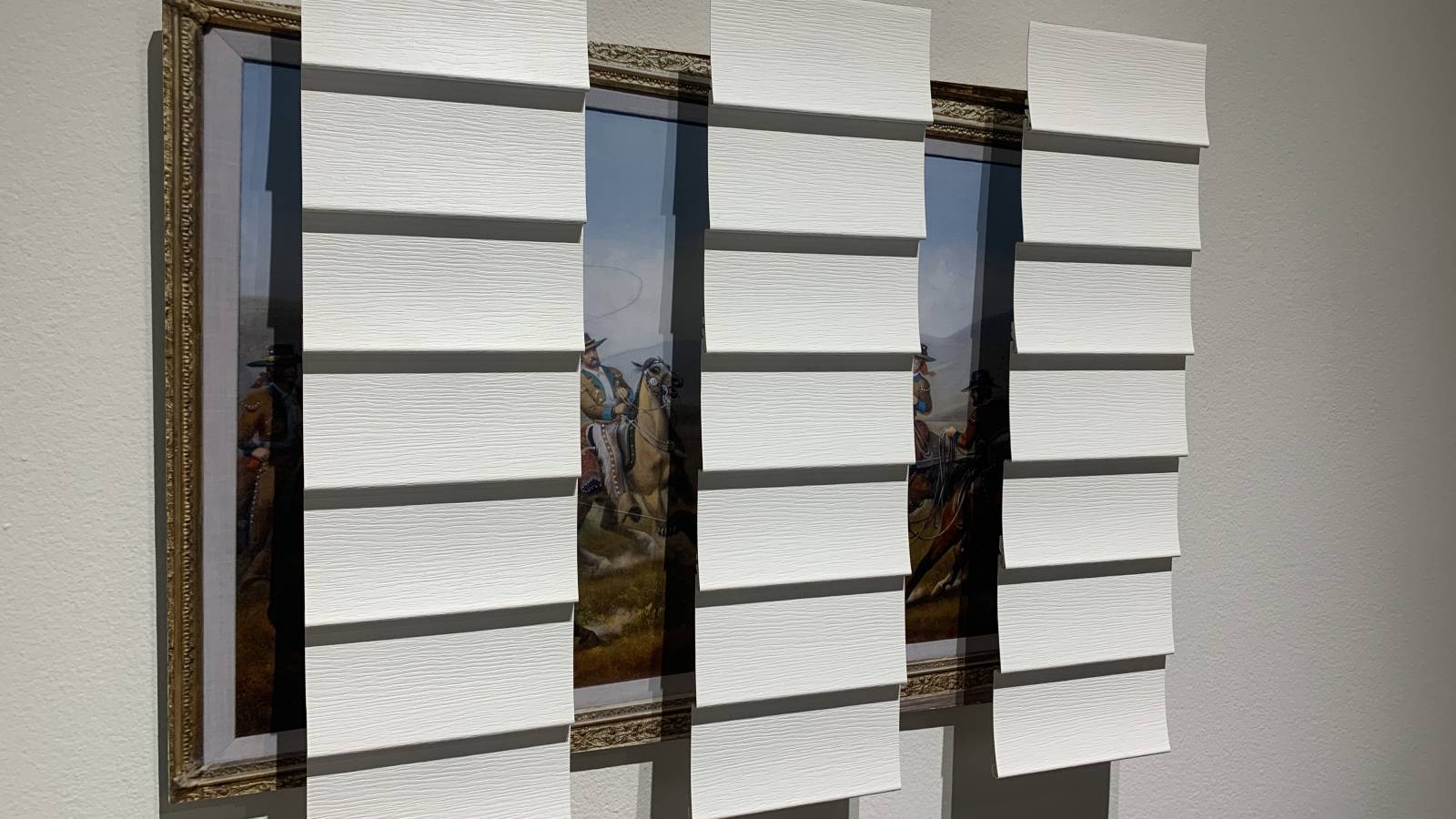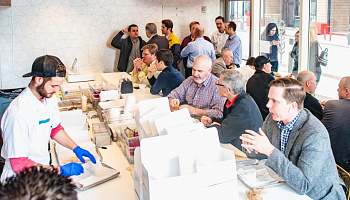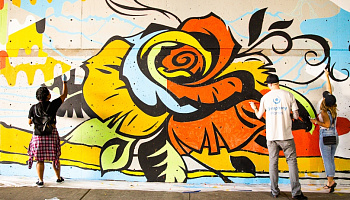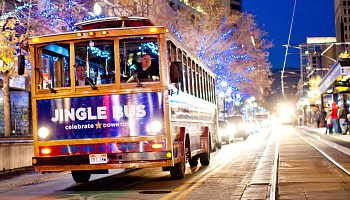Artist Jesse Meredith is curious; mostly, it seems, about why things are the way they are. His interest in people’s lived spaces led him to make Overton Windows, a photography-sculpture series examining how control and whiteness influence how many Americans live. THE BLOCKS recently sat down with Meredith to discuss his evolution as an artist, why he joined a militia along the way in making Overton Windows and what he plans to do next. Overton Windows is on exhibition at UMOCA now through February 4, 2023.
What has been your path as an artist and how did it bring you to Utah?
I began my BFA by studying sculpture, but then ended it in photography. After college, I lived in my hometown, New York City, and for a while in Arizona. I then moved back to New York where I set about establishing myself as a photographer. After a few years, however, I began to feel that the work I was creating wasn’t enough. I was making all these clever sculptural photos, but I didn’t know what they were about. I wanted to better understand the connection between thinking and making. So, I enrolled in graduate school at the Art Institute of Chicago. I lived there for a couple of years after getting my MFA and then came to Salt Lake City for a residency at UMOCA.
You joined a militia while you lived in Chicago, an experience you used to create an exhibit that premiered at Salt Lake City’s Finch Lane Gallery last spring called So That We May Fear Not. What was your time with the militia like?
Before I moved to Chicago, I had developed an interest in how authority works. I continued my research into military tactics after I moved to Illinois via the Internet, which triggered an active recruitment by local right-leaning militia groups. I wanted to understand how these groups work and so I found a local militia willing to let me hang out with them, take photos and ask questions. They accepted me at face value, and we became friends. We would meet every other Sunday in rural areas surrounding Chicago to do things like practice navigation skills or learn first aid. I really enjoyed those outings. We’d be all kitted up but, because of Illinois law, didn’t have guns—though guns certainly play a major role in the overall context of militias. I love being outdoors and found a boyish glee in running around the woods with them every other Sunday.
How long were you involved in the militia and what perception did you come away with?
I spent five years attending the militia gatherings, from 2016 until I moved to SLC for the UMOCA residency. I learned that there was a big disparity between the militia ideology perpetuated by media outlets like Fox News and what the members believed. Not everyone was on the same page about political issues. The commonality I did find was that the entire militia movement is based in white identity and the defense of territory. Many of the militia members were older and had grown up in a time when popular culture was rife with misogyny and war was romanticized. Fast forward 30 years and those things these men were promised when they were young has not been delivered. The ground is essentially disappearing beneath them, and they have no tools to adapt. The militia provides them with a safe space to discuss things that in a more mixed social setting would be problematic for them. It took me awhile to figure out what the militia project would be. I began working on Overton Windows at the same time and actually thought the two studies would become one big project. Part of the reason I applied to the residency at UMOCA was to have the space to bring both of those projects to a resting point.
How did Overton Windows ultimately become a singular piece?
The traditional definition of an ‘Overton Window’ is how what’s acceptable and what’s not shifts over time or with circumstances. Trump, for example, shifted the Overton Window; COVID did, too. The greater Chicago area is mostly suburban, and it made me start thinking about how space is delineated, broken down and policed by both visible and invisible forces—like why militias are formed, to defend against threats that are perceived to be real. And so, I began examining houses both within the metro area of Chicago and the suburbs and found the latter to be much more defensive, closed off and, to me, illustrative of the ambient defensive culture in the United States In addition to suburban architecture, Overton Windows includes Western, pioneer-era imagery.
What is the connection between those two for you?
After I came to Salt Lake City, Overton’s perspective broadened to include the pioneer ideal of manifest destiny. I visited several museums and other historic buildings in Salt Lake to explore Utah’s pioneer-era history. The art I found was so revealing, especially if you’re looking for it. It’s all about the idea of owning and defending property and whiteness. It’s very emblematic of American entitlement.
Your residency at UMOCA ended in November. What do you plan to do next?
I want to continue the conversation I began with Overton Windows and So That We May Not Fear elsewhere in the West. I plan to spend a couple of months in Los Angeles later this winter. After that, we’ll see.




